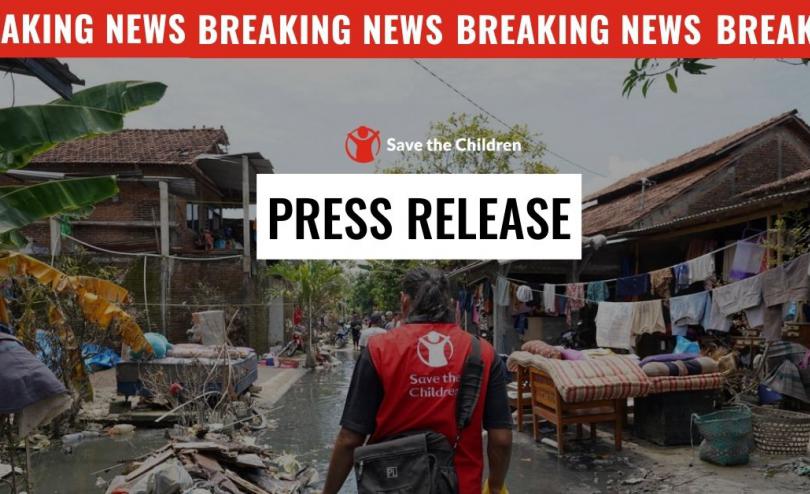More than half of Pakistan’s school age children will be out of school due to extreme heat

ISLAMABAD, 23 May 2024 – More than half of Pakistan’s school age children – about 26 million - will be locked out of classrooms for a week due to an ongoing heat wave, the latest in a string of countries to shut down education due to climate extremes, Save the Children said.
At least 26 million[1] children in Pakistan’s most populous province, Punjab - or 52 percent* of the country’s total number of pupils in pre-primary, primary and secondary education – will be out of school from 25 to 31 May.
Punjab’s education department said a surge in temperatures and a prolonged heat wave in the province had prompted the authorities to shut all schools but added that schools will be ‘allowed to conduct examinations as scheduled’.
Temperatures in parts of the north and northwest of Pakistan will be 4-6 °C ‘higher than normal’ for the rest of the week,[2] according to Pakistan’s Meteorological Department.
Pakistan is the latest in a string of countries to shut schools because of extreme heat. Bangladesh and the Philippines also closed schools last month as the mercury soared, while in South Sudan schools were shut for two weeks.
Climate and environmental threats are responsible for the disruption of the education of over 37 million children each year[3] and heat has a significant impact on education, with students showing lower levels of achievement during hot school years.
In East Asia and the Pacific, around 243 million children are exposed to hotter and longer heatwaves[4], putting their health and their education at risk.
Pakistan faces rates of warming considerably above the global average with a potential rise of 1.3°C–4.9°C by the 2090s[5] and the frequency of extreme climate events in Pakistan is projected to increase as well, putting strain on urban dwellers and outdoor laborers in Pakistan with increased risk of heat-related sickness and even death.
Rose*, 12, who studies at a Save the Children-supported child-friendly space in Walidad Chandio, Sindh province, said:
"We came to the Save the Children-supported child-friendly space in morning and our teachers oriented all the children on the hot weather and how to save ourselves in this heat. They also told us to seek shelter and drink lot of water and not to play during afternoon in open spaces exposed to sunlight."
Muhammad Khuram Gondal, Save the Children’s Country Director in Pakistan, said:
"Prolonged exposure to intense heat impacts children’s ability to learn and to concentrate and this puts their education at risk. Excess heat is also potentially lethal to children. We live at a time when the effect of climate change is all around us and it is undeniable that we need immediate and long-term solutions and support from the international community and world governments to effectively mitigate climate change for now and for future generations."
In Sindh province Save the Children, in collaboration with the Provincial Disaster Management Authority (PDMA) Sindh, has initiated a heatwave emergency response to raise awareness among communities, including children, about precautions to take during the heatwave. Save the Children is also leading a social media campaign to raise awareness about the risks associated with extreme heat.
As of April 30, 2024, Save the Children has provided humanitarian assistance to at least 1 million people, including more than 520,000 children, through life-saving activities in districts affected by the climate crisis.
Save the Children has been working in Pakistan since 1979 and has reached at least 14 million beneficiaries, including children, through programmes in health and nutrition, education, child protection, livelihoods and through our humanitarian response programmes.
ENDS
NOTES
*Name changed to protect anonymity.
*50 million children enrolled in pre-primary, primary, middle school and secondary education in Pakistan. Source: https://www.trade.gov/country-commercial-guides/pakistan-education (2021-2023 economic survey).
- https://blogs.worldbank.org/en/endpovertyinsouthasia/bringing-13-million-more-children-school-lessons-punjab
- Government of the Punjab School Education Department notification 21 May.
- Pakistan Metrological Department: https://twitter.com/pmdgov
- https://resourcecentre.savethechildren.net/pdf/born-into-the-climate-crisis.pdf/
- https://www.unicef.org/eap/press-releases/sweltering-heat-across-east-asia-and-pacific-puts-childrens-lives-risk-unicef
- World Bank Pakistan country profile.
For further information, please contact:
Amy Sawitta Lefevre, Global Media Manager (Asia): amy.lefevre@savethechildren.org
Raza Qazi, ACCM, Save the Children International Pakistan: raza.qazi@savethechildren.org
Our media out of hours (BST) contact is media@savethechildren.org.uk / +44(0)7831 650409




